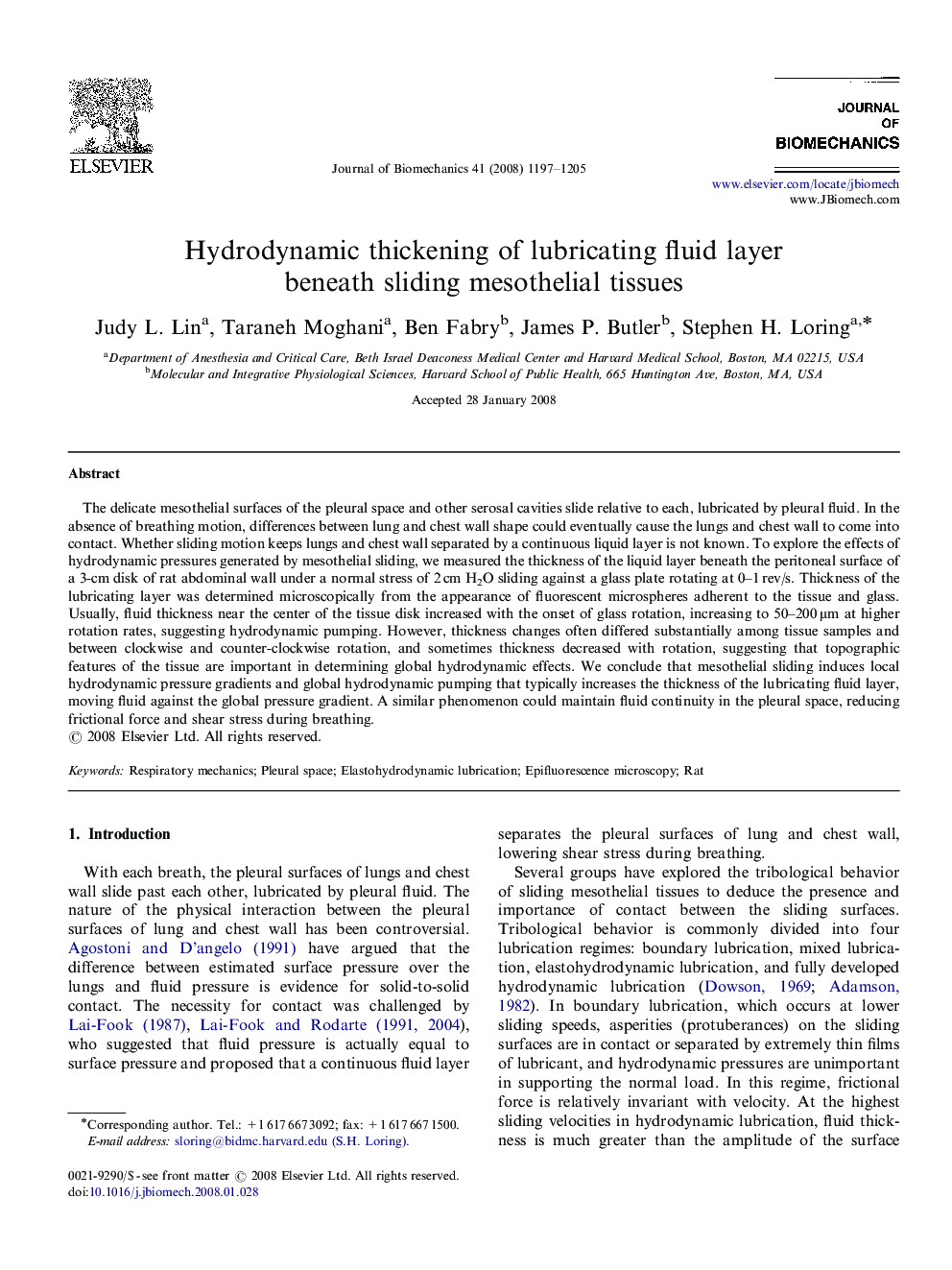| Article ID | Journal | Published Year | Pages | File Type |
|---|---|---|---|---|
| 873253 | Journal of Biomechanics | 2008 | 9 Pages |
The delicate mesothelial surfaces of the pleural space and other serosal cavities slide relative to each, lubricated by pleural fluid. In the absence of breathing motion, differences between lung and chest wall shape could eventually cause the lungs and chest wall to come into contact. Whether sliding motion keeps lungs and chest wall separated by a continuous liquid layer is not known. To explore the effects of hydrodynamic pressures generated by mesothelial sliding, we measured the thickness of the liquid layer beneath the peritoneal surface of a 3-cm disk of rat abdominal wall under a normal stress of 2 cm H2O sliding against a glass plate rotating at 0–1 rev/s. Thickness of the lubricating layer was determined microscopically from the appearance of fluorescent microspheres adherent to the tissue and glass. Usually, fluid thickness near the center of the tissue disk increased with the onset of glass rotation, increasing to 50–200 μm at higher rotation rates, suggesting hydrodynamic pumping. However, thickness changes often differed substantially among tissue samples and between clockwise and counter-clockwise rotation, and sometimes thickness decreased with rotation, suggesting that topographic features of the tissue are important in determining global hydrodynamic effects. We conclude that mesothelial sliding induces local hydrodynamic pressure gradients and global hydrodynamic pumping that typically increases the thickness of the lubricating fluid layer, moving fluid against the global pressure gradient. A similar phenomenon could maintain fluid continuity in the pleural space, reducing frictional force and shear stress during breathing.
